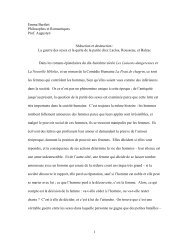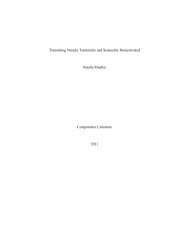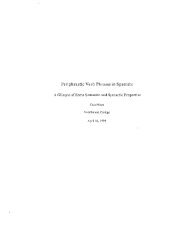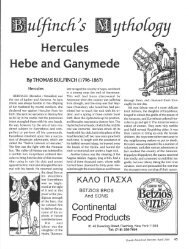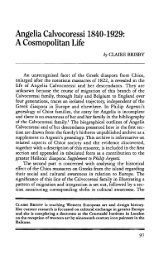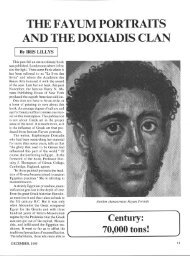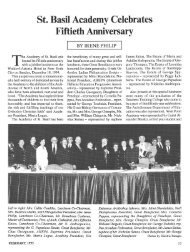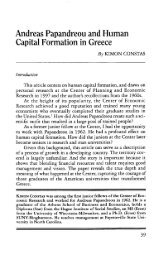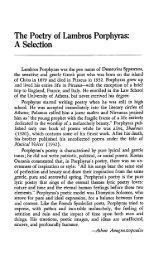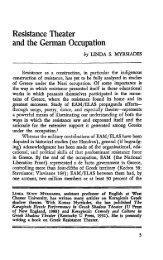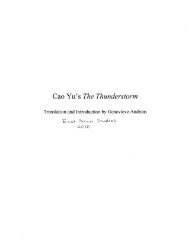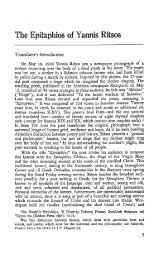Mythistorema - Triceratops Home
Mythistorema - Triceratops Home
Mythistorema - Triceratops Home
Create successful ePaper yourself
Turn your PDF publications into a flip-book with our unique Google optimized e-Paper software.
66 JOURNAL OF THE HELLENIC DIASPORA<br />
This view is reinforced if one compares poem "18" with another poem,<br />
"The Last Dance" (1934) of the collection Book of Exercises II<br />
(published after the poet's death)." Both poems present the decline<br />
of the senses, but in poem "18" there is an ambiguity with respect to<br />
the waste of love that leads to petrification—only an indirect allusion<br />
is made to the death of a beloved person—while in the "Last Dance"<br />
the deadening of love follows after a hubris has been committed. This<br />
is suggested by the references to Oedipus (the old men with their<br />
canes) and Agaraemnon (the murky bath, the net, the knife and the<br />
purple). The bitter conclusion is that the bad roots do not wither<br />
easily, the miasma of frenzy does not disappear and thus love dies.<br />
The "Last Dance" has a general level referring to the excesses of<br />
Greek history and contemporary experience. On the personal level,<br />
it implies that once a hubris has been committed, love loses its spell—<br />
it may become a dangerous lust, and then even restraint does not lead<br />
to balance but to a deadening of the senses. "We drank love little by<br />
little/a mithridatic drug it seemed/until it reached the point of<br />
deadening." This is also implied by the title of the poem the "Last<br />
Dance." An analogous situation is suggested in "Days of June 1941"<br />
by the lines "Our thirst/a mounted guard, become marble/ at the dark<br />
Gate of the Sun/he cannot ask for anything/he's on his guard."<br />
1 9<br />
The landscape in poem "19" is very similar to that in part I of T.S.<br />
Eliot's Waste Land ("The Burial of the Dead"). The protagonist is<br />
The collection Book of Exercises II has not been translated into English. The<br />
following is a literal rendering of the poem for the purposes of this discussion:<br />
THE LAST DANCE<br />
An old tale slightly altered is what we are all paying off/both we and<br />
the others/like the old men reduced to ashes/who held canes in their hands<br />
and spoke calmly./The murky bath, the net, the knife/the purple and the<br />
voice which was asking about the sea,/who will drain it dry,/nurtured our<br />
life./Our love, we drank it little by little/it seemed like a mithridatic drug/<br />
until at the end it reached a point of deadening./Indeed, we were always<br />
guided wisely/by our people.<br />
Enough of life, this life/between Penteli, Hymettus and Parnitha./Yet the<br />
roots,/the roots do not wither easily,/the miasmas of frenzy, of injustice, of<br />
shallowness do not easily disappear./Three thousand years and more/on the<br />
same rocks/we pay off an old tale slightly altered./Have pity on those who<br />
are waiting.<br />
The motif of dance appears often in Seferis' poetry—for instance, in "Gymnopaedia,"<br />
"Nijinsky," <strong>Mythistorema</strong>, "Hampstead," "The Thrush," Three Secret<br />
Poems—always connected with sensuous imagery.



